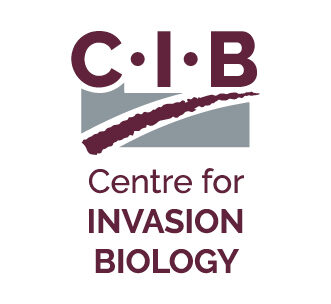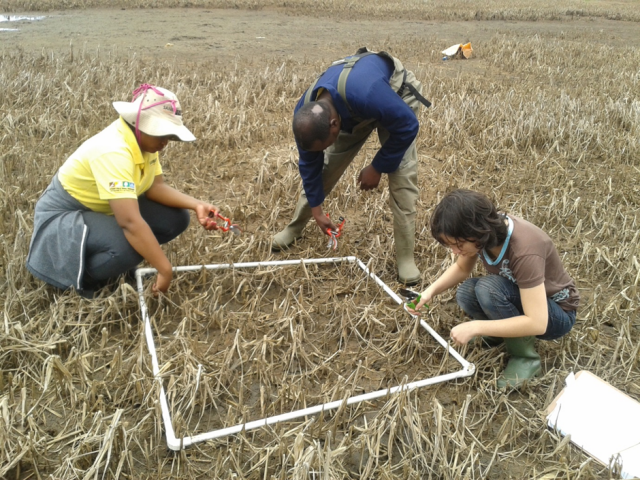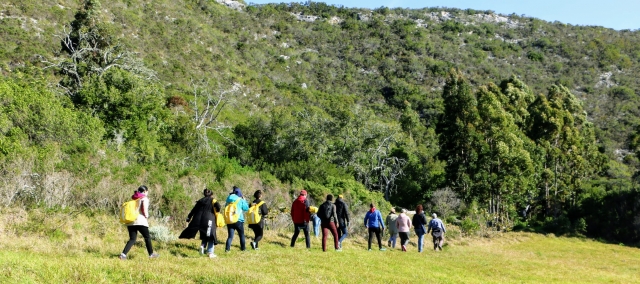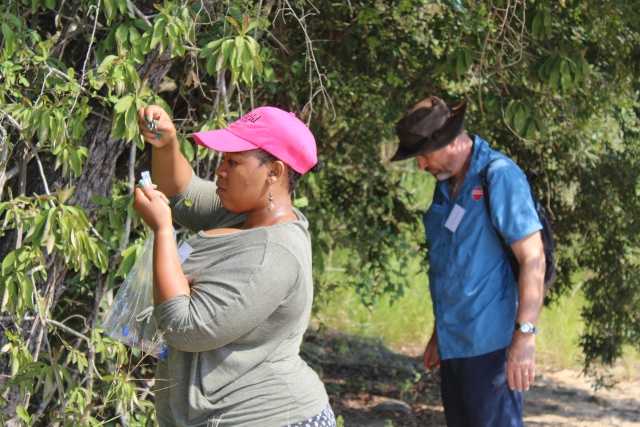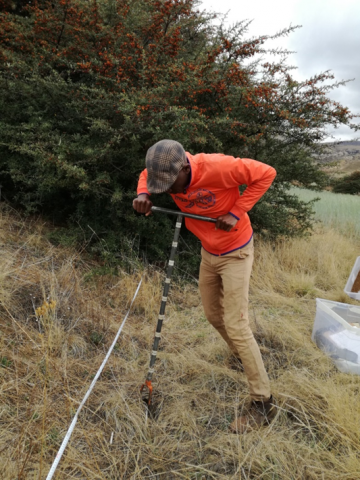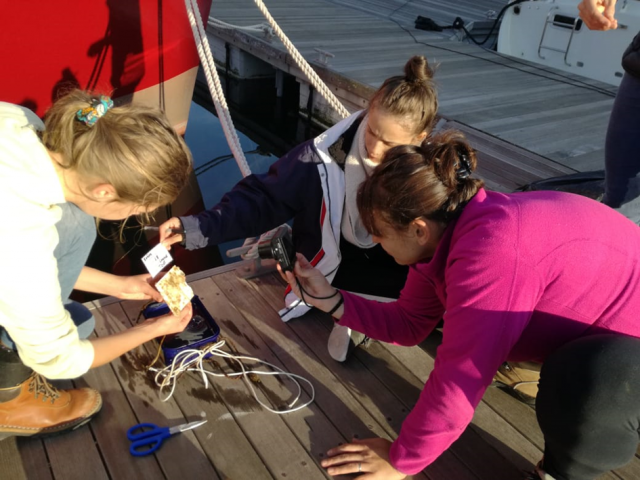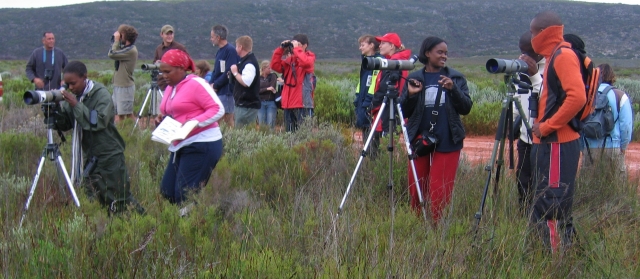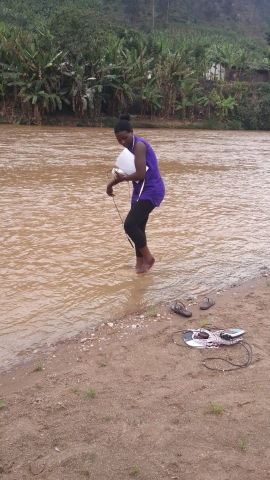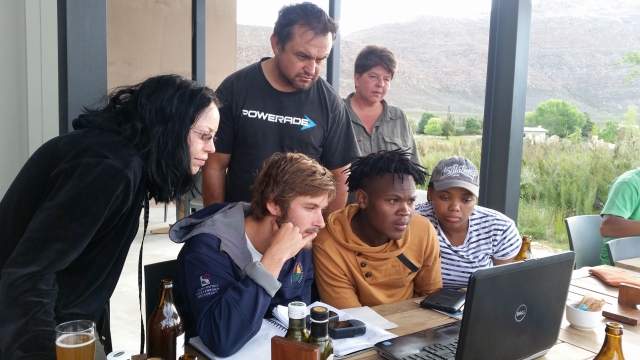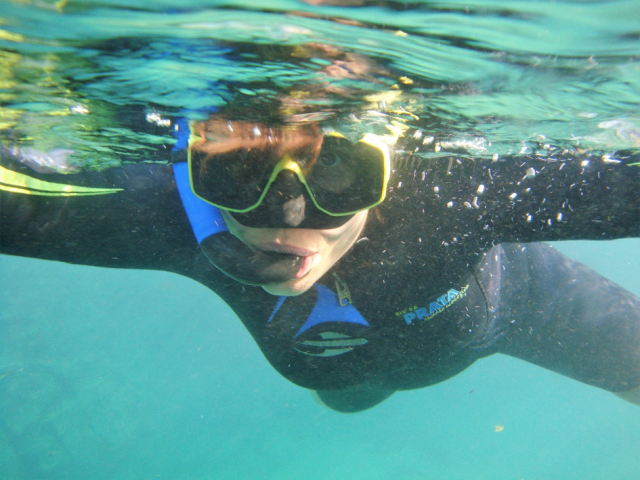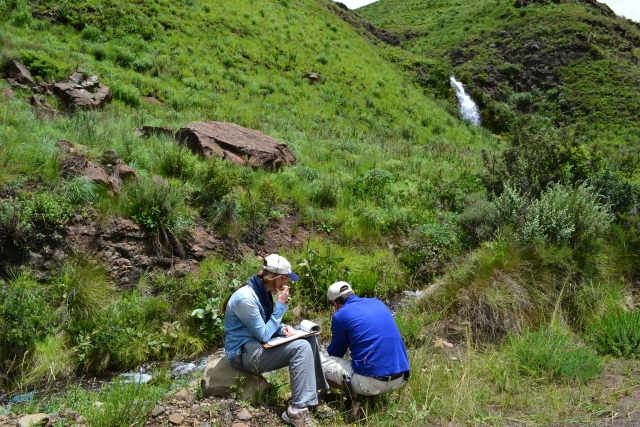The C·I·B produces graduates who are sought after for their knowledge, creative and critical thinking and for their expertise in the fields of biodiversity science and invasion biology. We encourage co-supervision and interdisciplinary work and welcome enquiries from academics in this regard.
Bursaries
The C·I·B no longer offers NRF bursaries. Instead, the NRF manages such bursaries directly via the NRF online system https://www.nrf.ac.za/nrf-for-post-graduate-students/bursaries-scholarships/ and https://applicationportal.co.za/nrf-bursaries. Any applications made through the NRF by prospective students should be for free-standing bursaries and will not be linked to the C·I·B. Affiliation with the C·I·B is not funding-linked, if you want your invasion project to be C·I·B linked, please approach your prospective supervisor.
We encourage students to pursue bursary opportunities offered by their home university or prospective institution, other government or reputable bursary funder.
Post-doctoral funding opportunities are available through our core team members; enquiries in this regard should be directed at the relevant core team member.
The C·I·B funds students through contract agreements with a range of organisations working in the invasion science field, e.g. Natural Resources Management Programme of the Department of Fisheries, Forestry and the Environment and from donor funding.
Please contact the responsible supervisor for further details.
Available projects
Synthesizing evolutionary and ecological responses to climate change
The project will focus on large datasets relating to insects, and their intra-specific trait variation in time and space, to test how organisms’ phenotypes are shaped by their environment, informing how rapidly they may respond to future climate change.The effect of climate change on the impacts of invasive species in South African protected areas
The effect of climate change on the impacts of invasive species in South African protected areasThe water-related economic consequences of failing to adequately halt the spread of invasive alien trees in the Western Cape
The project aims to quantify the economic impacts of changes to the Western Cape water supplies resulting from different invasive alien tree control scenarios.Understanding and managing invasions in Marine Protected Areas
Project background In recognition of the escalating scale of marine invasions, there is an increasing need to understand the drivers of invasions in Marine Protected Areas (MPAs), their implications for […]
The range of projects on offer are provided in the project descriptions and prospective students can also propose their own invasion science projects. Students should consult the academics named in the specific projects for further ideas about potential bursary funding.
Please contact the responsible core team member for further details.
Available projects
Are peacocks wanted in peri-urban gardens?
This MSc study will involve stakeholder surveys and focus groups to determine public perceptions of the values of alien and native bird species. The student will need to have good people skills, and the desire to publish their work in scientific journals.Assessing essential biodiversity indicators for biological invasions in South African National Parks
This study aims to assess the status in South African National Parks (SANParks) against the indicators developed for the national status report as well as other systems such as those developed as part of ‘A vision for global monitoring of biological invasions’ (Essential Variables for Invasion Monitoring).Assessing the trade of reptile species in the South African pet trade
Many animal species have been freely translocated around the world as part of the exotic pet trade. Globalisation has been one of the main contributing factors leading to human movement and trade of diversified species from continent to continent. To date, more than 1000 reptiles are sold as pets worldwide.Determining realistic restoration goals for riparian vegetation in a social-ecological landscape context: Case Study Dwars River, Western Cape
This MSc will aim to determine how best to integrate diverse (and often opposing) ecological and social goals in developing a rigorous landscape/catchment scale restoration plan. The context is the Dwars River, Western Cape, within a significantly altered and human-occupied catchment.Determining the potential of invasive insects to respond to climate change
Invasive insects are an increasing threat to native diversity but the question of how well they will perform in face of climate change remains unexplored. In particular, the knowledge of their adaptive evolutionary trait change in response to climate change is limited. This line of enquiry poses several known challenges…Developing and testing tools for analysing risks of biological invasions
There have been major developments recently towards an international standard system for reporting the impacts of biological invasions, but these are yet to be implemented or integrated with risk analyses. In particular, a framework for the listing of alien taxa under regulations has recently been developed for South Africa.Do urban areas provide thermal refugia to invasive species?
This project aims to explore potential climatic factors that favour but also confine alien species’ distributions into urban areas. It will measure and assess differences in the mosaics of thermal microclimates available to alien species such as H. axyridis and L. capensis in urban and natural areas, and account for the diversity of stage-specific habitats.Invasion ecology of the emerging alien plant species in South Africa
This study therefore aims to collect experimental and observational evidence on life-history traits of alien fleshy-fruited/seed-bearing plant species for supporting the risk analysis processes and accurate listing of species under the current national regulatory framework.Long term soil physico-chemical and microbial recovery monitoring after Eucalyptus camaldulensis clearing
This proposed study will focus on changes in soil physico-chemical and bacterial properties ten years after Eucalyptus camaldulensis removal along the Berg River in the Western Cape, South Africa. The aim will be to quantify the long‐term consequences of E. camaldulensis clearing on soil physico-chemical and bacterial properties.Provenance and pathways of invasive populations of Common Garden Lizard
The Common Garden Lizard, Calotes versicolor, has a wide native distribution from mainland Iran in the West, through the Indian peninsula, Myanmar to Hong Kong. If it were one species, it would be the world’s most widely distributed lizard. However, it is widely acknowledged that there are multiple species that are currently ascribed to this patronym.Public perception of bird diversity in peri-urban gardens
This MSc study will involve stakeholder surveys and focus groups to determine public perception of the values of alien and native bird species.Shipping as a pathway of introduction for invasive species in Africa
Shipping is a major pathway of introduction for marine alien species that are transported on ships’ hulls or in ballast water carried by ships. The aim of the project is to identify shipping routes to major African ports that are likely to facilitate the introduction of species that could establish…Tadpole wars: the impact of invading Guttural toad larvae on Endangered Western Leopard toads
This project seeks to quantify the effects of the interaction between tadpoles of the two species, Guttural toad (Sclerophrys gutturalis) and Western Leopard toad (Sclerophrys pantherina) in an experimental enclosure.Taking toads back to Durban
The Guttural Toad has successfully invaded the islands of Mauritius and Reunion, as well as Constantia near Cape Town. All invasions seem to have originated near Durban, KZN. Recent research has shown ways in which these toads have adapted to their invaded habitats. But how would these react if they were moved back to Durban?Teaming up for success: the role of social behaviour in the spread of invasive Guttural Toads
This research aims to compare the social behaviour, and associated the biological implications, between native and invasive populations of the guttural toad, Sclerophrys gutturalis. Our goal is to gain a deeper understand of how sociality may have promoted their invasive success.
